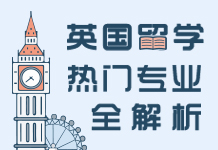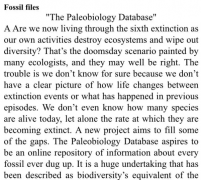2016年11月26日青岛朗阁雅思阅读考试真题回顾及解析
来源:青岛朗阁
浏览:
发布日期:2016-11-28 16:34
摘要:2016年11月26日的雅思阅读考试已经结束了,这次的雅思阅读考试考了什么内容,题目难度怎么样?青岛朗阁小编在第一时间为考生们带来了2016年11月26日的雅思阅读考试真题回顾及解析,雅思考生们赶紧过来围观~
青岛朗阁雅思阅读老师 李园
| 考试日期: | 2016年11月26日 |
| Reading Passage 1 | |
| Title: | A head of time(旧) |
| Question types: |
是非无判断 Summary 填空 |
| 答案参考 |
新西兰儿童发现头盖骨之谜 1. TRUE 2. FALSE 3. NOT GIVEN 4. FALSE 5. SPECIALISTS 6. EUROPEAN 7. RADIOCARBON 8. 296 9. race 10. gender 11. Australia 12. archaeologists 13. shipwreck |
| 题型难度分析 | 第一篇的题型包括判断题和两个填空题,均为有序题型,难度不大,把握好做题时间,定位位置即可。 |
| 剑桥雅思推荐原文练习 |
剑11Test 1Passage1 剑10Test4Passage1 |
| Reading Passage 2 | |
| Title: | 中国黄蚂蚁(旧) |
| Question types: |
分类题classify 判断题 |
| 答案参考 |
14 F 15C 16 A 17 G 18 E 19 TRUE 20 FALSE 21 FALSE 22 TRUE 23 TRUE 24 TRUE 25FALSE 26NOT GIVEN |
| 相关英文原文阅读 |
Chinese Yellow Citrus Ant In 1476, the farmers of Berne in Switzerland decided, according to this story, there was only one way to rid their fields of the cutworms attacking their crops. They took the pests to court. The worms were tried, found guilty and excommunicated by the archbishop. In China, farmers had a more practical approach to pest control. Rather than rely on divine intervention, they put their faith in frogs, ducks and ants. Frogs and ducks were encouraged to snap up the pests in the paddies and the occasional plague of locusts. But the notion of biological control began with an ant. More specifically, the story says, it started with the predatory yellow citrus ant Oecophylla smaragdina, which has been polishing off pests in the orange groves of southern China for at least 1700 years. The yellow citrus ant is a type of weaver ant, which binds leaves and twigs with silk to form a neat, tent-like nest. In the beginning, farmers made do with the odd ants' nest here and there. But it wasn't long before growing demand led to the development of a thriving trade in nests and a new type of agriculture--ant farming. The story explains that citrus fruits evolved in the Far East and the Chinese discovered the delights of their flesh early on. As the ancestral home of oranges, lemons and pomelos, China also has the greatest diversity of citrus pests. Andthe trees that produce the sweetest fruits, the mandarins--or kan--attract a host of plant-eating insects, from black ants and sap-sucking mealy bugs to leaf-devouring caterpillars. With so many enemies, fruit growers clearly had to have some way of protecting their orchards. The West did not discover the Chinese orange growers' secret weapon until the early 20th century. At the time, Florida was suffering an epidemic of citrus canker and in 1915 Walter Swingle, a plant physiologist working for the US Department of Agriculture, was, the story says, sent to China in search of varieties of orange that were resistant to the disease. Swingle spent some time studying the citrus orchards around Guangzhou, and there he came across the story of the cultivated ant. These ants, he was told, were "grown" by the people of a small village nearby who sold them to the orange growers by the nestful. The earliest report of citrus ants at work among the orange trees appears in a book on tropical and subtropical botany written by His Han in AD 304. "The people of Chiao-Chih sell in their markets ants in bags of rush matting. The nests are like silk. The bags are all attached to twigs and leaves which, with the ants inside the nests, are for sale. The ants arereddish-yellow in colour, bigger than ordinary ants. In the south if the kan trees do not have this kind of ant, the fruitswill all be damaged by many harmful insects, and not a single fruit will be perfect. The story goes on to say that the long tradition of ants in the Chinese orchards only began to waver in the 1950s and 1960s with the introduction of powerful organic (I guess the author means chemical insecticides. Although most ruit growers switched to chemicals, a few hung onto their ants. Those who abandoned ants in favour of chemicals quickly became disillusioned. As costs soared and pests began to develop resistance to the chemicals, growers began to revive the old ant patrols. They had good reason to have faith in their insect workforce. Research in the early 1960s showed that as long as there were enough ants in the trees, they did an excellent job of dispatching some pests--mainly the larger insects--and had modest success against others. Trees with yellow ants produced almost 20 per cent more healthy leaves than those without. More recent trials have shown that these trees yield just as big a crop as those protected by expensive chemical sprays. One apparent drawback of using ants--and one of the main reasons for the early scepticism by Western scientists--was that citrus ants do nothing to control mealybugs, waxy-coated scale insects which can do considerable damage to fruit trees. In fact, the ants protect mealy bugs in exchange for the sweet honeydew they secrete. The orange growers always denied this was a problem but Western scientists thought they knew better.Research in the 1980s suggests that the growers were right all along. Where mealy bugs proliferate under the ants' protection they are usually heavily parasitised and this limits the harm they can do. Orange growers who rely on carnivorous ants rather than poisonous chemicals maintain a better balance of species in their orchards. While the ants deal with the bigger insect pests, other predatory species keep down the numbers of smaller pests such as scale insects and aphids. In the long run, ants do a lot less damage than chemicals--and they're certainly more effective than excommunication. |
| 题型难度分析 | 第二篇文章第一个题型为Classify中的时间分类,好定位,不难,第二个题型为判断,有序,难度中等。 |
| 题型技巧分析 |
CLASSIFY 题型要求考生根据文章内容来确定问题中的句子属于哪一类。有时是根据人物分类,比如,文章中可能会列举几位科学家就某一问题的不同研究和发现,请你按照人物的观点来将其分类;有时是按照特征来归类,如,文章中会列出几种事物的一些特征进行对比,请你根据事物的属性特征来分类;或者,还可以根据时间、地点、事件来分类等等。总之,要按照事物发生、发展的某一个特征来分类,缕出线条,把属于同一类的句子找出来。 做分类练习要掌握这样一个要领:即先读文章后面的问题,找到分类的标准,也就是说,看题目要求你按照什么标准来分类,再去阅读找答案。假设题目的问题是按照三个人物来分类的,那么,阅读时,就要有意识地将与这三个人物有关的关键句子和内容用不同的符号标出来。这样,文章的脉络就自然地分成了三个部分,根据问题中各个句子的内容来判断其所属类别也就容易多了。又如,题目如果要求根据年代来分类,就可通过找文中的时间入手来定位要找的信息点。但是,要注意,有的特征可能既属于A 又属于B,所以在做题时一定要认真阅读,包括题目要求,把握住关键的词语,这样才不会有疏漏。 |
| 剑桥雅思推荐原文练习 | 剑4 Test 4Passage3 |
| Reading Passage 3 | |
| Title: | The Persuaders (旧) |
| Question types: |
段落配信息 单选 填空 |
| 题型难度分析 | 本篇文章还是以配对题作为主打题型,单选的考察既有细节也有主旨,总体难度相对而言较高。 |
| 题型技巧分析 |
针对此类题的题型特点和解题步骤,我们在解题过程中一定要注意以下几个问题: 1. 用“打包”方法对付乱序:把整组题全部一次性吃透,然后去原文从头至尾定位。否则,考生如果一题一题的解题,时间会严重不足的,最好是文章一遍看下来,能找到所有的信息。此外,大家应该注意在去原文定位的过程中,一定要脑、眼和手并用:眼是肯定要用的了,不用脑会导致忽视同义转换,不用手(笔)会使我们处于走马观花的状态,然后会怀疑自己是不是漏掉了信息而不停地会看。 2. “吃透”题干准确判断关键词至关重要。如果没吃透题干,就无法准确判断关键词,就可能对原文中的重要信息没感觉。 例如:在AUSTRALIA’S SPORTING SUCCESS一文后面的第3题-------a reason for narrowing the scope of research activity,意思是“缩小研究活动的范围的原因。”一个非常重要的信息是“narrowing the scope”,我们只要注意到这一点,在原文看到focus on 的时候,一定会有感觉的。还有第4题------how some AIS ideas have been reproduced, 很多同学把reproduce 理解为“再制造”或“重新制造”, 结果怎么样都找不到,但如果考生能把它理解为“复制”,就很容易了,因为最后一段首句提到copy. 3. 在解题的先后上,把这类题放在最后是比较明智的做法。首先这样做符合由易到难的解题策略,如果一上来就解这类题,我们可能会心烦意乱,信心全无;其次,在解完其它题之后,这类题中的很多信息可能我们知道它们的定位,这样就省去了许多时间。如:AUSTRALIA’S SPORTING SUCCESS一文中,我们在完成8---11题后,再去看1---7题,就会发现第2、4、5题都已经有着落了。 |
| 剑桥雅思推荐原文练习 | 剑10Test 4passage2 |
|
考试趋势分析和备考指导: 本次雅思考试前两篇文章难度不大,均为好定位或者有序题型,第三篇难度大一点,出现了 “人见人烦”的配对题——段落细节配对题。接下来的雅思阅读考试题型段落配依然是主流题型,需要引起大家的注意。判断题、填空题、选择题三大有序题保持稳定,list of headings宏观题型有所减少。而文章类型,本次考试涉及生物类、商业类,考古类,一支都是雅思文章热门类型,大家平时有时间可以多多涉猎相关文章,积累有关的素材,提高相应的词汇量。整体来看,雅思阅读考试的题型和文章类型保持稳定,大家有条不紊,按照剑桥真题认真复习,相信一定能取得理想的成绩。 |
|

扫二维码,添加朗阁咨询老师,备注“官网”
免费领取雅思、托福备考计划、精选资料,最新口语新题考点资料
25
2022-06
-
2020年1月16日雅思听力考试真题
2020年1月16日雅思考试已经结束,正在备考雅思的小伙伴,你们想要知道这次考试的听力部分都...
25
2022-06
-
2020年1月16日雅思阅读考试真题
正在进行雅思备考的小伙伴,你们想知道2020年1月16日雅思考试的考试内容吗?今天为了帮助大家...
25
2022-06
-
2020年1月16日雅思写作考试真题
今天为了帮助正在进行雅思备考的小伙伴更好的准备雅思考试,青岛朗阁雅思写作名师 费晓静...
25
2022-06
-
2020年1月16日雅思口语考试真题
今天青岛朗阁雅思口语名师张开翼为大家整理了2020年1月16日雅思口语考题总结,分析了雅思口...
04
2020-12
-
2020年11月14日朗阁雅思听力考题回顾
今天,要和大家分享的是2020年11月14日朗阁雅思听力考题回顾,希望这篇文章能够对大家的学习...
04
2020-12
-
2020年11月14日朗阁雅思阅读考题回顾
今天,要和大家分享的是2020年11月14日朗阁雅思阅读考题回顾,希望这篇文章能够对大家的学习...
热门课程
大家都在看
阅读(2095)
阅读(1965)
阅读(1942)
阅读(1323)
阅读(1093)
阅读(831)







